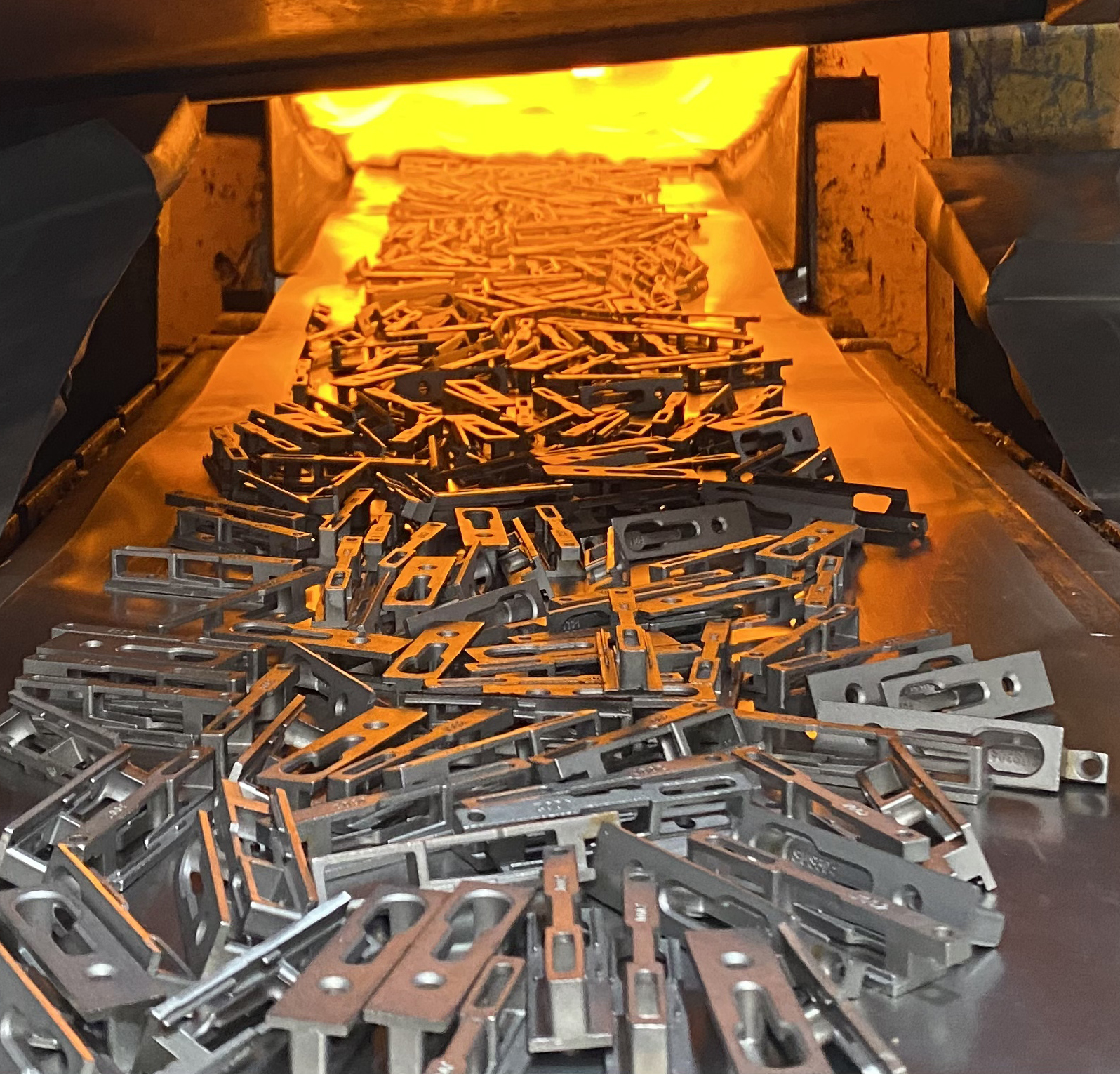Comparison of the latch bases for SUS304 doors and windows before and after solution heat treatment
Jun. 14, 2025
SUS304 is a common austenitic stainless steel, and solution heat treatment is an important process in its production and processing. Below is a comparison of the latch bases for SUS304 doors and windows before and after solution heat treatment in terms of appearance, performance, etc.:
Appearance
Before treatment: There may be stress marks on the surface of the latch base due to machining. The color may be uneven, with slight differences in hue appearing at some machined areas. The overall glossiness is relatively low.
After treatment: The surface of the latch base becomes smoother and more uniform, with a more consistent color, exhibiting the characteristic silvery - bright luster of stainless steel. The stress marks on the surface are basically eliminated.
Performance
Hardness
Before treatment: Due to work - hardening during the machining process, the hardness of the latch base may be relatively high, and the hardness in local areas may be uneven. This may affect its machinability and subsequent service performance.
After treatment: The austenitic structure becomes more uniform, and the hardness will decrease, generally below HB200. At the same time, the hardness uniformity is improved, which is beneficial for subsequent machining and use.
Strength and Toughness
Before treatment: The strength may be relatively high, but the toughness is relatively poor. When subjected to external impacts, it may be more prone to brittle fracture.
After treatment: A good balance between strength and toughness is achieved. Solution treatment eliminates the internal stresses generated during the machining process, refines the grains of the material, and thus improves the toughness. Meanwhile, the reasonable microstructure also ensures that the material has sufficient strength to better withstand various forces during the use of doors and windows.
Corrosion Resistance
Before treatment: The corrosion resistance of the latch base is relatively weak. In humid and other corrosive environments, it may be more likely to rust.
After treatment: Solution heat treatment dissolves carbides, reducing the tendency for intergranular corrosion. At the same time, the improved surface uniformity and smoothness are conducive to the formation of a dense oxide film, thereby significantly enhancing the corrosion resistance of the latch base. It can be used for a long time without rusting in more severe environments.
Dimensional Accuracy
Before treatment: During the machining process, due to factors such as cutting forces and thermal deformation, the dimensional accuracy of the latch base may be affected to a certain extent, with some dimensional deviations existing.
After treatment: During the solution heat treatment process, the material will undergo thermal expansion and contraction. The dimensional accuracy after treatment is improved, closer to the design requirements, and the dimensional stability is better.










